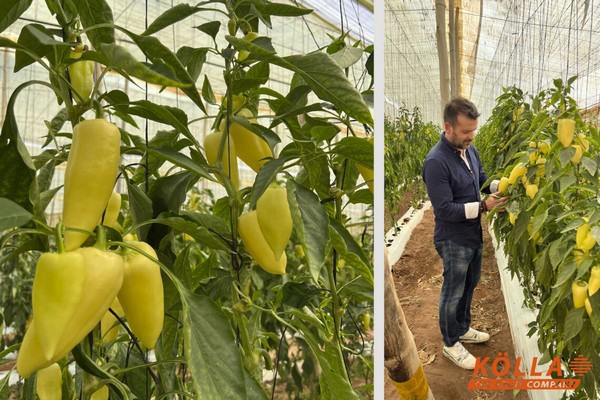Overall, the bell pepper season in Almeria, Spain, is drawing to a close. In isolated cases, such as in the Berja area, located in the higher altitudes of Almeria, small quantities are still being produced. Red and yellow peppers may still be available until the end of April. This development can also be observed in the coastal region of Roquetas and is due to the spring planting season, the KÖLLA Group reports in its latest market update.
Murcia
In order to ensure continuous bell pepper production from Spain from April onwards, KÖLLA will be using products from Murcia from April to August. Already this week the season in Murcia has started successfully and smaller quantities of all colors are available. From week 16/17, the company expects to have sufficient quantities for long-term programs and possible advertising.
"A large part of the produce comes from glass greenhouses and only a little from the open field harvest - so they are comparable in quality to the produce from the Netherlands," the statement continues.

Morocco
Morocco is seen by KÖLLA as an important complement to the Spanish regions of Almeria and Murcia, which remain the main areas for bell pepper production. To plan new programs and see the current volumes and quality for themselves, product specialists Javier Casanova and Biagio Aufiero traveled to Morocco earlier this month. There they visited four producers around Agadir. "In our cooperation, we attach great importance to our partners being Smeta certified and also having a water certificate," says pepper product specialist Javier Casanova.
"In the long term, we expect the cooperation with Morocco to be very fruitful. They provide good quality at fair prices. So far, the production area of pointed peppers in Agadir is around 150 ha.," Casanova adds. "These are good conditions for the KÖLLA Group to strongly involve Morocco in our future plans."
Turkey: bottlenecks regarding California and Capia
Turkey, which is right behind China in terms of quantitative production, produces more than 3 million (3,091,290) tons of peppers on an area of 80,239 hectares, equivalent to a yield of 3.85 kg/m2. Thanks to Turkey's geographical location and climate, peppers can be harvested 12 months a year, mainly in the Mediterranean, Aegean and Marmara regions.
The following varieties are grown in Turkey: Green peppers (Dolma, Sivri and Kil Sivri), Capia peppers (pointed peppers).
Hungarian paprika (red and yellow), chili and jalapeno paprika
Peppers for drying. "Currently, there is a shortage of California and Capia varieties. In Demre, where the largest export volumes of California chili, Hungarian Charleston and other bell pepper varieties are grown, they also expect a shortage in 20-30 days. In turn, some volumes can be absorbed from the Antalya region, Mavikent. Summer planting will start around June 15," KÖLLA concludes.
For more information:
koella.com/de
